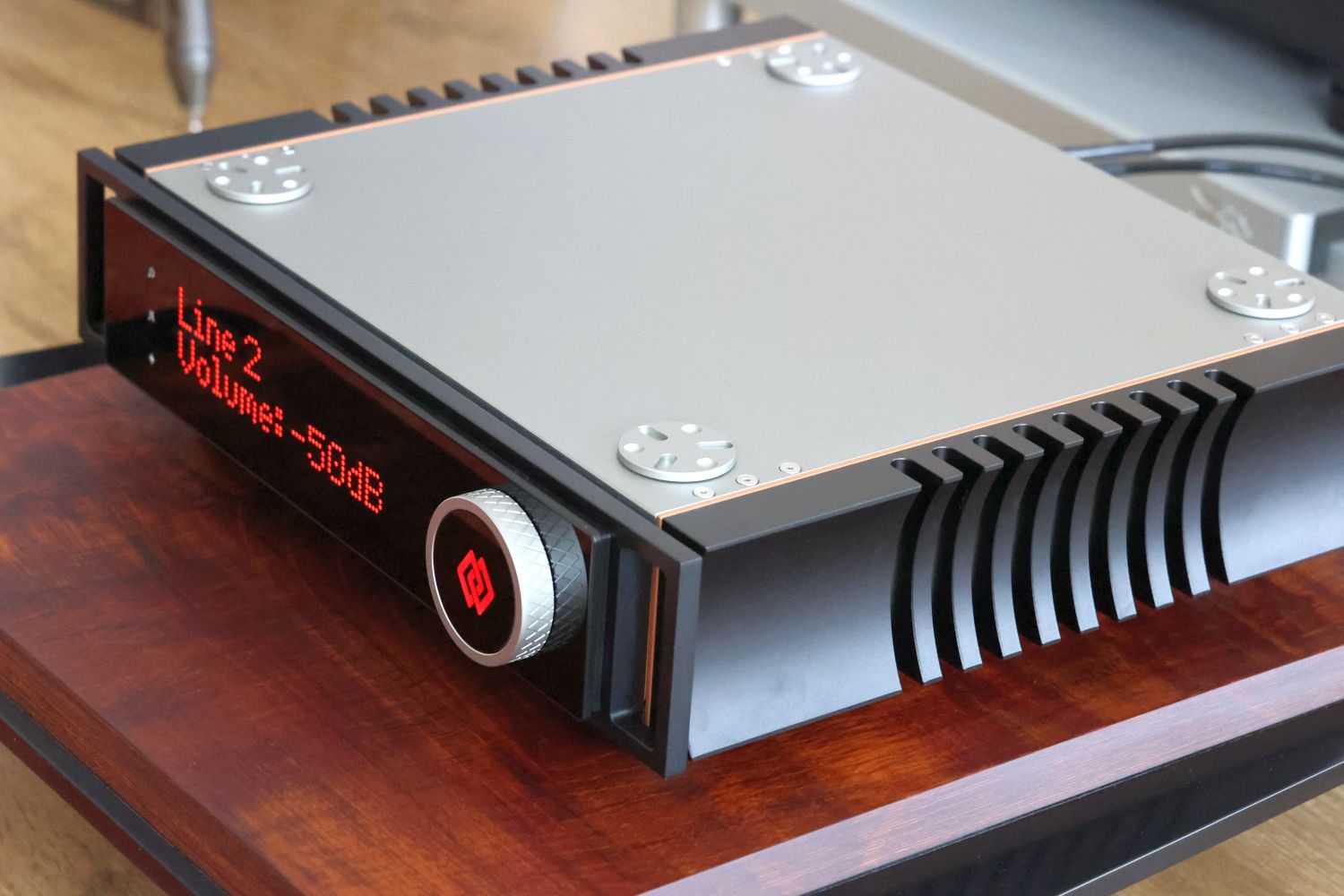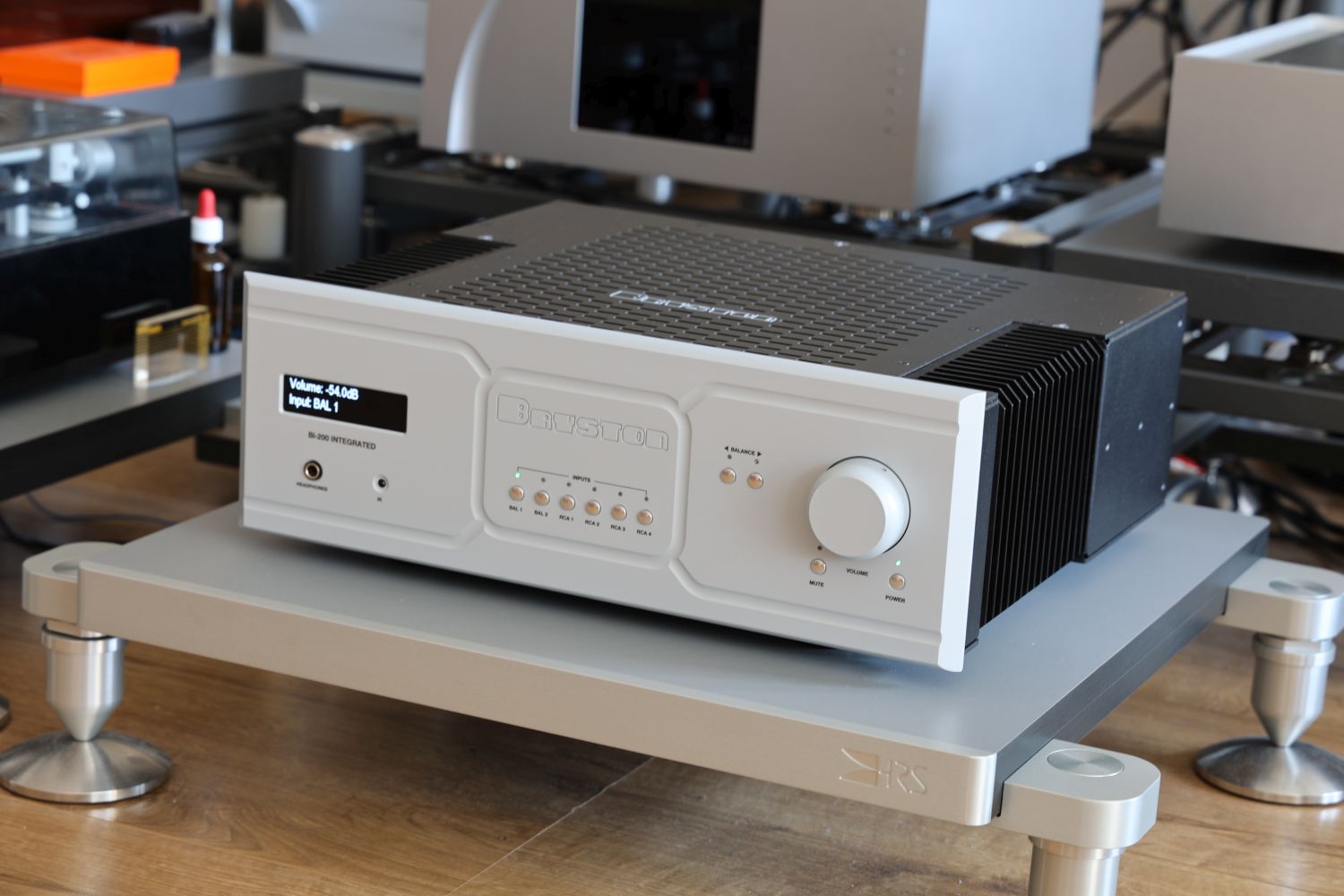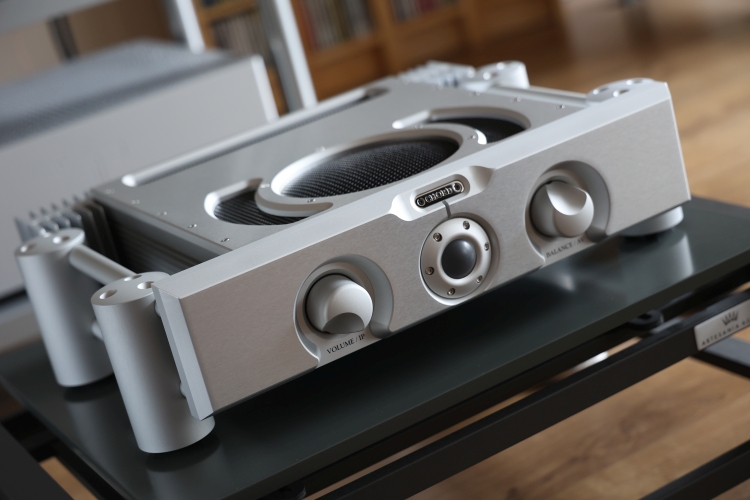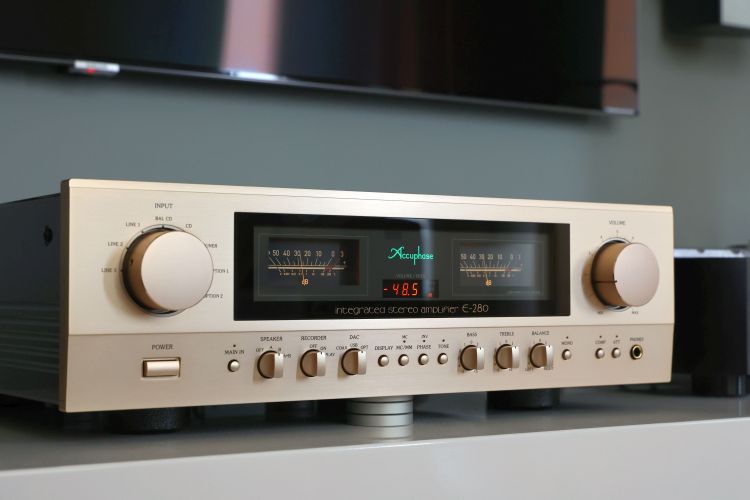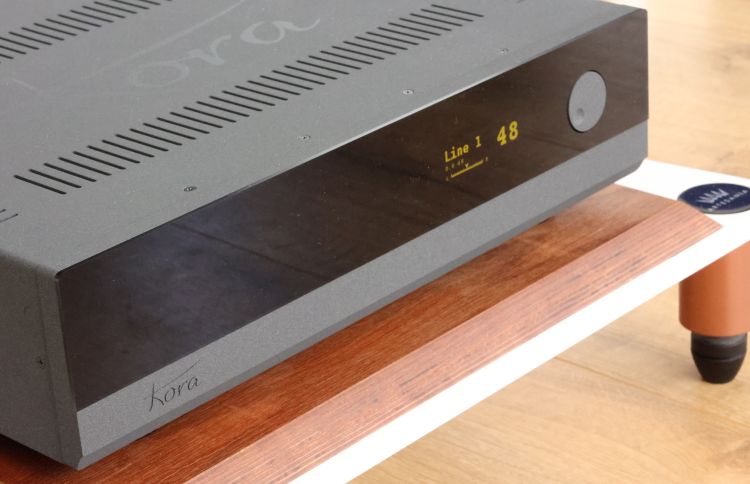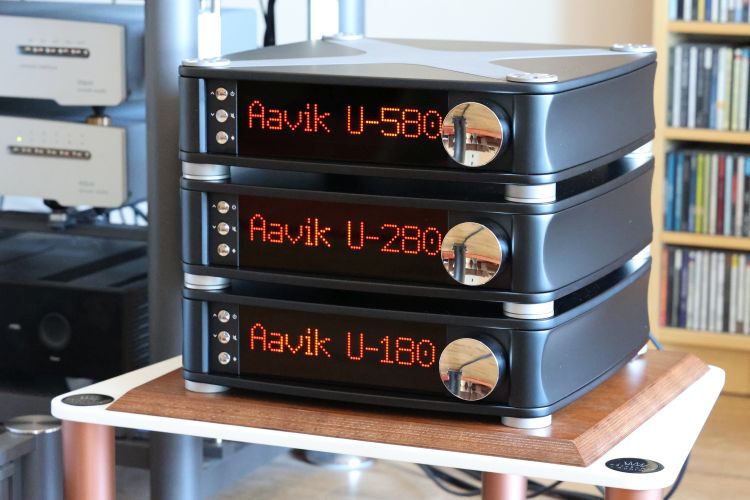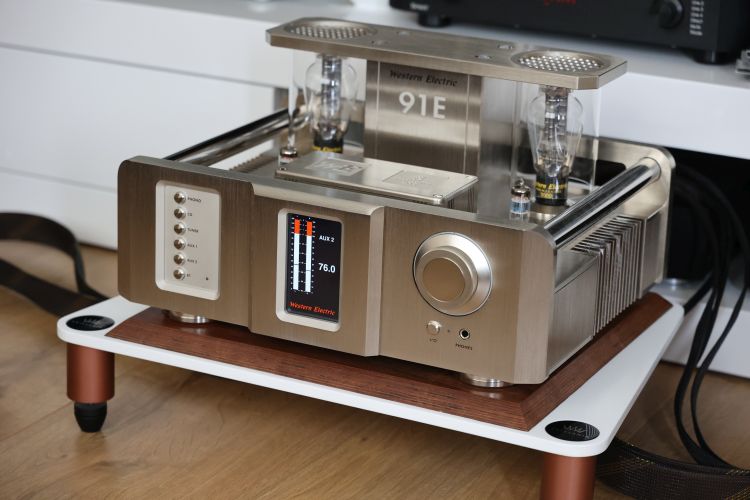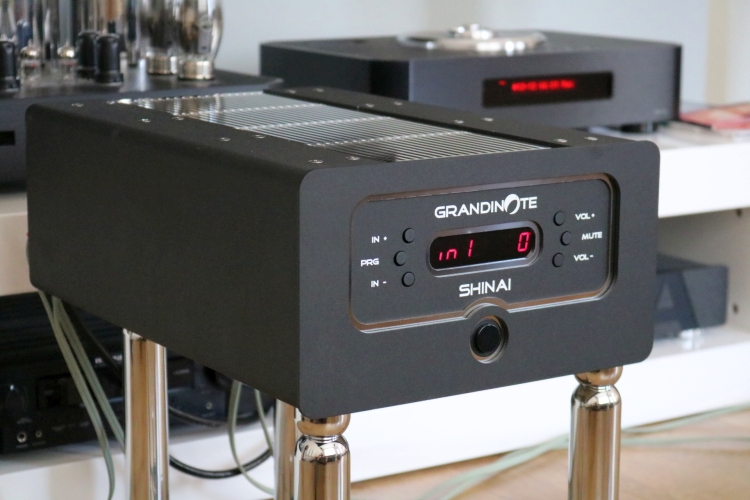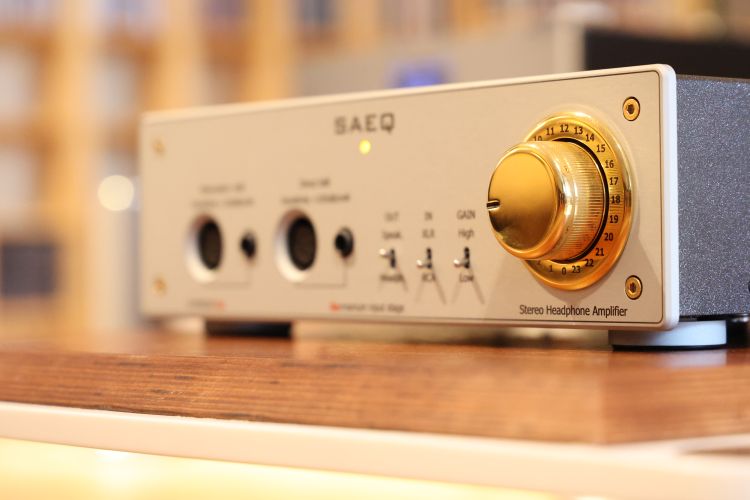
SAEQ Hyperion Ge with Xavian Perla Esclusiva
Before subjecting the Hyperion Ge to the Magicos, I wanted to ease in by trying it with the considerably easier-to-drive Xavian Perla Esclusivas in the secondary setup. These speakers are normally driven by an Accuphase E-280 integrated amplifier that sits more or less in the same price category as the SAEQ. With these small and relatively efficient monitors, I expected the Hyperion Ge to work very well, but as I would soon find, it did much more than that!
The Hyperion Ge was powered with a Belden 19364 cable terminated with Bals type 73 schuko and Oyaide C-004 IEC. Its input is derived from an Antipodes EX music server running Roon, connected to an Accuphase DP-430 CD player/DAC via CAD USB-1 USB cable which is then fed to the SAEQ via a Driade Flow Link Reference 808 RCA cable.
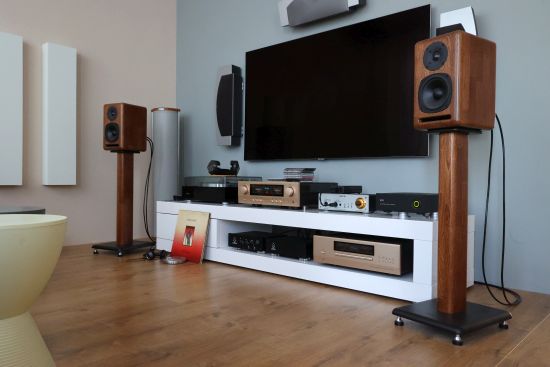
Not only did it have an excellent grip, but it also showed no signs of stress even when playing rather loudly. I’m sure the amp must have a maximum loudness ceiling but I consistently reached the limit of what I found a comfortable listening level well before the amp reached its theoretical limit.
But it being stable despite its modest power rating does not begin describing what the Hyperion Ge can actually do. What the amplifier truly excels at is in presenting music with a stunning level of resolution, transparency, and immediacy, while remaining formidably refined and delicate. Sure enough, in these areas, it was clearly outperforming the Accuphase. Heck, if I’m honest, in terms of the aforementioned sonic traits, I felt as though the little amp was actually approaching the big CH amp in the other room!
In spite of being highly resolving, the Hyperion Ge manages to infuse its lively and expressive delivery with a thoroughly organic flow, deep tonal saturation, and a remarkably natural timbre.
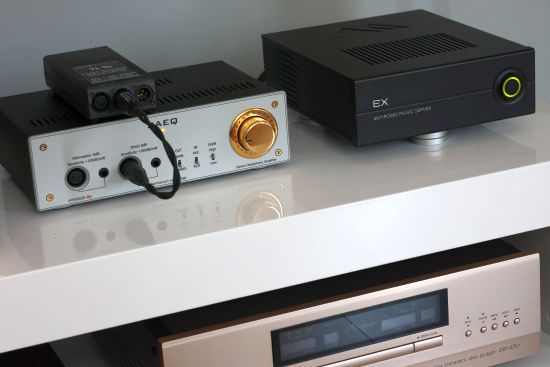
It did not matter what kind of music was played, the little amp simply delivered everything with conviction whilst always sounding fantastically engaging. It certainly has more warmth and richness than I am accustomed to and just like many tube amplifiers, it has a measure of body and meatiness to the extent of being very slightly opulent. In that sense, I would say it is not strictly 100% neutral. But with its communicative yet intimate, internally lit midrange and the deep emotional involvement that it brings, it feels closer to SET amplifiers than any push-pull type that I have heard. What I also think I hear is the purity of a simple design with as few output devices as possible, indeed, a trait common to SET designs.
Basically, the Hyperion Ge manages to sound smooth, rich, and warm, but without paying the usual price in the areas of speed, drama, and transient sharpness. In fact, its crisp transient behavior throughout the midrange made the Accuphase sound comparatively encapsulated, lacking expression, and in the midrange at least, feeling somewhat thickened and restrained.
If I’m being critical, the Hyperion did not, however, have quite the same level of control, articulation, and extension in the low bass as the Accuphase, nor the same amount of slam, but on the whole, this did not detract from what was a startlingly emotionally-involving as well as very realistic, life-like performance.
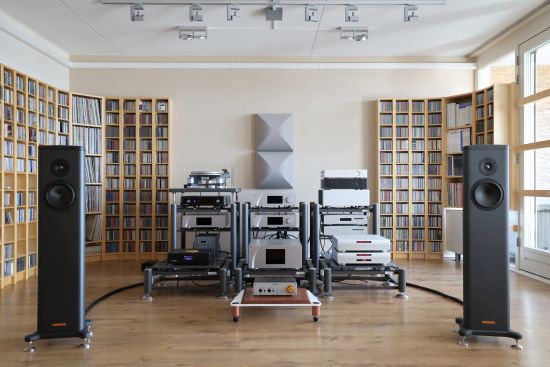
With Magico S1 MkII
Soon after I started listening to the Xavians, the Hyperion Ge had me convinced. But my mind still wandered, would it drive the considerably more power-hungry Magicos just as well?
The answer to that question came as soon as the first sounds poured out of the speakers. Oh yes, the little amp did drive the S1 MkIIs very well indeed! But again, there was so much more to the Hyperion Ge than it merely being remarkably stable.
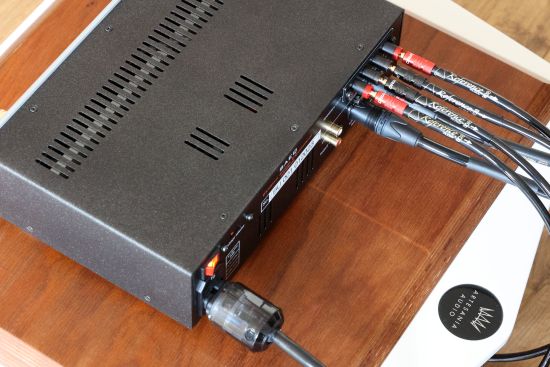
Driven directly from the CH Precision C1.2 DAC’s analog outputs using Driade Flow Link Reference XLR cables (thus bypassing the L1 analog preamp) and again powered by a Belden 19364 cable terminated with Bals type 73 schuko and Oyaide C-004 IEC, there’s nothing small about this mini-amp’s performance: it scales surprisingly well and easily fills the room with luscious sound. It won’t reach party levels with the much less efficient Magicos, and in this combination, it is not the first choice for metal or hard rock, but outside of the rare occasion where I want to push it, it still goes loud enough for my personal taste. When you do push the amp, it will simply start compressing dynamically, followed by a soft crushing of the peaks.
Really all that is lacking is enough power to properly allow bass stabs to be as dynamic and impactful as they should. With the Hyperion Ge, low-frequency sounds such as drums or low (synth-)bass guitar notes are less visceral and more rounded in their impact than with big power amps but this is only natural. Of course, the Hyperion Ge is not the first choice to pair with speakers as inefficient and relatively difficult as Magicos. But that’s not really the point. The mere notion that the amp performs as well as it does even under far-from-ideal circumstances illustrates that it will have plenty of power for any efficient pair of speakers, let alone any pair of headphones.
So long as it’s used within its limits, there’s an immense sense of being directly coupled to the music but without the sound being square, edgy, or hard. Unlike when they are paired with most tube amps, despite only having 11 Watts at their disposal, the Magicos do not at all become sleepy or overly smooth. Rather, the sound is open, lively, and beautifully expressive. It really is the antithesis of the stereotypical “transistor” sound but nevertheless with impressive crispness and very fast transient behavior.
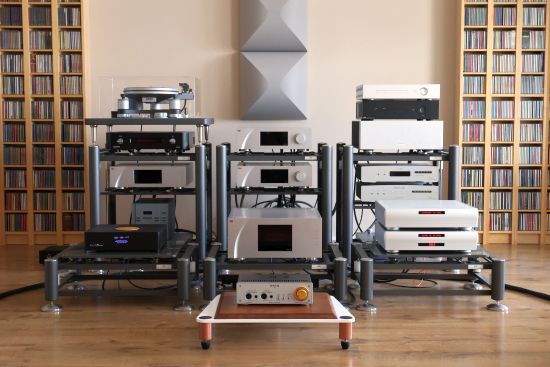
As with the Xavians, listening to the Hyperion Ge with the Magicos again produces strong vibes of being close to the music and the artist’s intent. The amp sounds supremely liquid yet also incredibly believable and authentic. The sheer realism is abundant.
In addition, the soundstaging, depth, the layering within, the fantastic living-and-breathing aspect of the performances, not to mention its superb detailing and precise yet airy and liquid treble, all culminated in a sound that was just impossible to fault.
With the Magicos, too, there is a Golden, “tube” like glow that makes for a very seductive sound. But I hasten to add that it does not feel like a sauce poured on top of an otherwise cool silicon sound. The musical presentation itself is truly liquid, delicate, and rich in and of itself. If anything, I’d swear that I was listening to a superb tube amp.
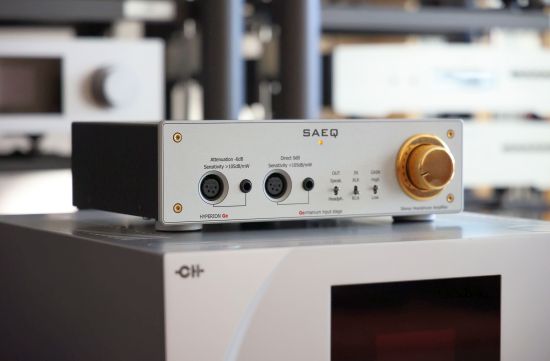
Volume Setting
What I did find is that the amp can sound different, depending on the gain, as well as on its volume dial setting. With a low gain or volume setting, it tends to sound smoother and warmer, and with a high gain and/or higher volume setting, it becomes more articulate and expressive. Also, the dynamic slam and the sense of urgency were improved with a higher volume setting. One might deduce from this that the amp needs to play a little louder but that’s not it. The CH C1.2 DAC has a defeatable hybrid analog/digital volume control and as I found, the Hyperion Ge sounded best when its volume was set a little higher and the C1.2 DAC’s volume was enabled and set a little lower. After some experimentation to find the ideal balance, a nice side effect was that I now also had an IR remote control. This really is the single downside of the amp, as it is probably intended as a headphone amp after all. I’m told that a separate preamp is in the making that will have multiple inputs and also include a remote control.
I’ve had the Hyperion Ge connected in the main system for a couple of days and apart from some extra conviction in the bass, to my astonishment, I sort of forgot that it was there.
Clearly, the amp is not just suited for comforting or relaxed listening, but it actually performed like a true reference component. As I proceeded with my assessments for other equipment under review, I found that I could very easily hear all the subtleties in upstream sources just as well as with the Swiss high rollers. I actually used the Hyperion Ge to assess the minute differences in software settings for a music server. Clearly, it has absolutely no problem laying bare the smallest details.
And after playing a wide range of music over the course of these days, I can only conclude that I didn’t encounter any issues from its limited power and that I could actually live very happily with this little amp!
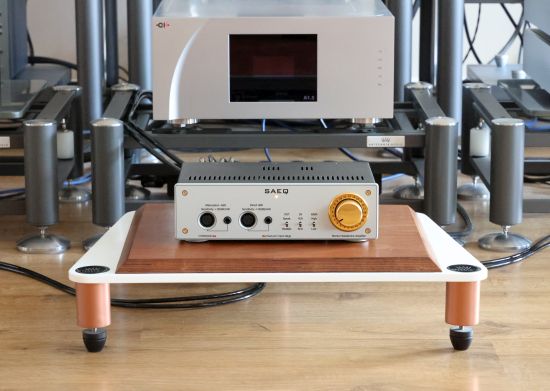
After going back to the comparatively very costly CH Precision L1 preamp and A1.5 power amp combo, there’s no denying the big Swiss duo’s superiority. Indeed, the sound is now significantly more robust, especially in the bass. It is more controlled and impactful, but is it more detailed? More finely nuanced? More fluid, airy, free-flowing, or more natural? Yeah, no, actually it is not! Compared to the little SAEQ amp, the CH front end is comparatively more solid-state-like albeit done very well. As a matter of fact, so far, I have always felt the CH components have the least electronic or solid-state signature so far. Interestingly, the SAEQ manages to offset that balance by sounding even less like what it is in essence: a solid-state design. More “annoyingly”, the Hyperion Ge also manages to sound both more intimate and more gushing than the big CH combo whilst using only a fraction of the power. Go Figure! In fact, the amp never got more than lukewarm to the touch. If the amp had a little bit more power, more inputs, and remote control, I might have been tempted to keep it in the system!
So, after all this, it is now time for what I presume is the amp’s actual intended use… headphones!
Next: Headphone Listening
